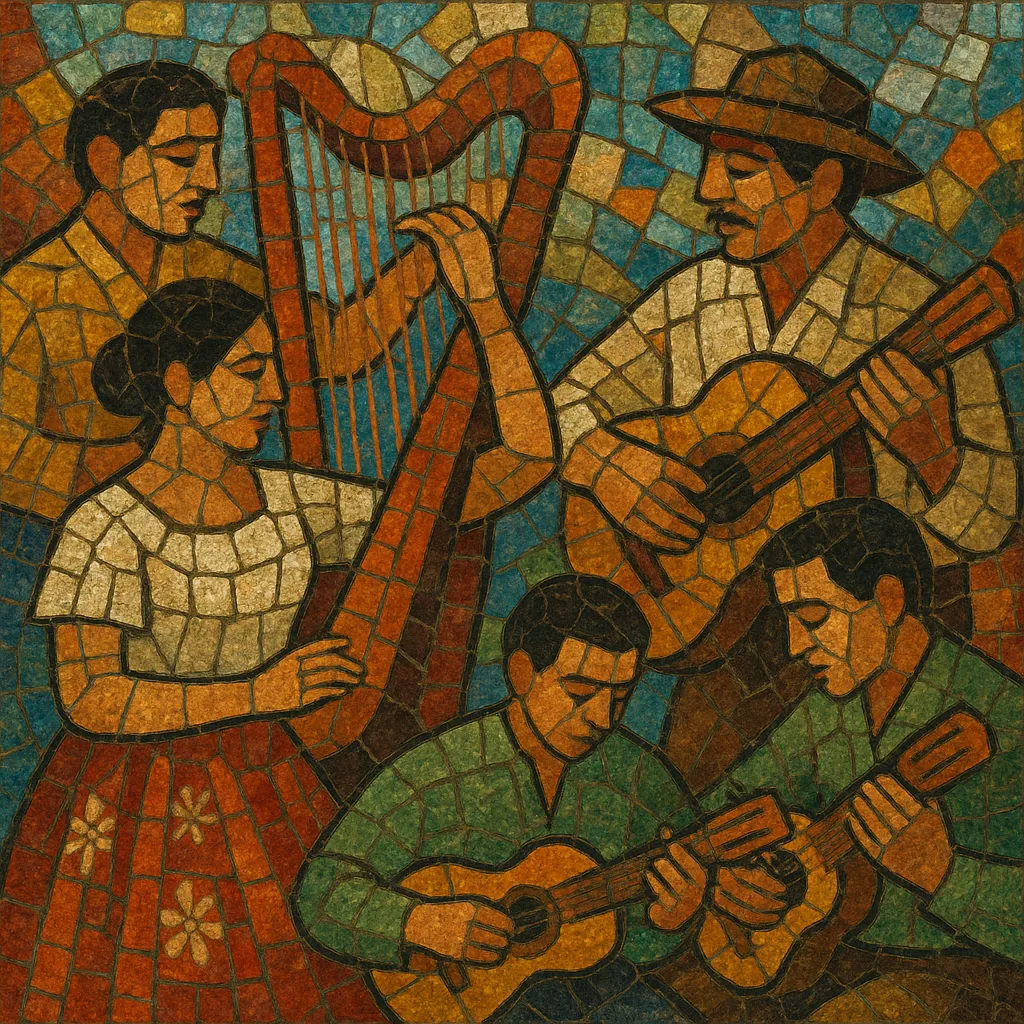Polka paraguaya is the Paraguayan adaptation of the European polka, fused with Indigenous Guaraní musical aesthetics and rural criollo practice. It is typically lively, dance-oriented, and marked by a characteristic sesquiáltera (6/8 against 3/4) feel that produces a buoyant hemiola swing.
It is most often performed by small folk ensembles centered on the iconic arpa paraguaya (Paraguayan harp), accompanied by guitars, requinto, and sometimes accordion and light percussion. Lyrics frequently mix Spanish and Guaraní (Jopará), ranging from romantic and pastoral themes to historical and patriotic subjects. While the default character is festive and bright, many classics carry a nostalgic, sentimental tone in their melodies.
European polka arrived in Paraguay in the 19th century via salon and military-band repertoires. Local musicians absorbed the form and transformed it by blending it with Guaraní rhythmic sensibilities and rural criollo practice. By the 1850s–1870s, a distinctly Paraguayan polka had emerged, featuring the sesquiáltera interplay of 6/8 and 3/4 that gives the style its buoyant swing.
Through the late 19th and early 20th centuries, the arpa paraguaya became central, giving the genre its crystalline, arpeggiated texture. Guitars supplied rhythmic strumming and harmonic grounding, and singers delivered verses in Spanish and Guaraní. Regional variants and subtypes (such as the faster galopa and the more driving kyre’y) formed within the broader polka paraguaya umbrella.
In the first half of the 20th century, composers and performers like Félix Pérez Cardozo, Eladio Martínez, and Mauricio Cardozo Ocampo created enduring standards (e.g., Pájaro Campana, Galopera). Mid-century ensembles—most famously Luis Alberto del Paraná with Los Paraguayos—toured internationally, placing the Paraguayan harp sound and the polka’s rhythmic sparkle on world stages and records.
Polka paraguaya remained the default festive dance music across Paraguay and influenced neighboring traditions, notably helping shape Argentina’s chamamé. It also served as the rhythmic foil for the creation of guarania (a slower, more sentimental genre) in the 1920s–30s. Today, the style persists in folk festivals, family gatherings, and contemporary recordings, maintaining both its dance function and its emblematic role in Paraguayan identity.


